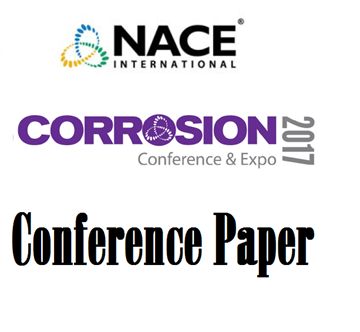Search
Individual Conference Papers
View as
Sort by
Display
per page
Solvent-free Vinyl-Ester Lining Systems for Severe Corrosion Protection
Product Number:
51323-19253-SG
Publication Date:
2023
$20.00
Solving Challenges in CP and Coating Surveys Through Technology Advancements
Product Number:
MECC23-20064-SG
Publication Date:
2023
$20.00
Some Effects Of Surface Finish And LWR Environment On Environmentally-Assisted Crack Initiation In Alloy 182
Product Number:
ED22-18329-SG
Publication Date:
2022
$20.00
Some Recent Corrosion Problems in Thermal Desalination Plants
Product Number:
51319-12816-SG
Publication Date:
2019
$20.00
Sometime More Is Just More: THPS Biocide Laboratory Kill Study on Wildtype Sulfate Reducing Bacteria.
Product Number:
51323-18858-SG
Publication Date:
2023
$20.00
Sour Corrosion Products Formed in High H2S Gas Wells
Product Number:
51319-12866-SG
Publication Date:
2019
$20.00
Sour Crack Initiation and Propagation Assessment of P110 and Q125RY Casing Materials in Mild Sour Conditions
Product Number:
51324-20617-SG
Publication Date:
2024
$40.00
Sour Environmental Severity Based On Hydrogen Permeability And HIC/SSC Susceptibilities
Product Number:
51321-16543-SG
Publication Date:
2021
$20.00
Sour Gas and Hydrogen Embrittlement Resistance of High-Strength UNS N07022 Alloy for Oil and Gas App
Product Number:
51317--9479-SG
ISBN:
9479 2017 CP
Publication Date:
2017
$20.00
Sour or Not Sour? That Is the Question: A Review of The NACE “Sour Limit” – Evolution and Implications for Modern Oil & Gas Production
Product Number:
51321-16626-SG
Publication Date:
2021
$20.00
Sour Service Limit Of 17% Cr Stainless Steels Grades For OCTG
Product Number:
51321-16637-SG
Publication Date:
2021
$20.00
Sour Service Qualification of Carbon Steels (SMYS 450 MPa) and Their Welds Considering Field H2S Fugacity / Dissolved H2S Concentration - Qualification at Design and Atmospheric Pressure
Product Number:
51324-20609-SG
Publication Date:
2024
$40.00












